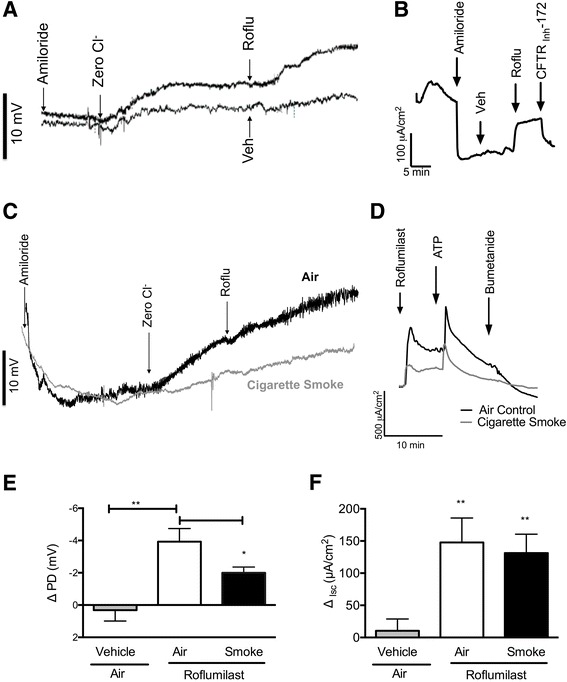Fig. 1.

Effect of acute roflumilast perfusion in normal and cigarette smoke-exposed mice. a, b Non-CF A/J mice were treated with roflumilast (30 nM) or vehicle perfused acutely on the nasal surface N = 7–9. a Representative nasal potential difference (NPD) tracings of roflumilast as compared to vehicle following perfusion with amiloride (100 μM) and forskolin (20 μM). b Representative short-circuit current (Isc) measurements of excised mouse trachea treated with vehicle followed by roflumilast (30 nM) in the setting of amiloride (100 μM). CFTR-Inh172 (10 μM) was added to block CFTR-specific current at the end of the experiment. c-f Non-CF A/J mice were exposed to cigarette smoke or air via a nose-only exposure system for five weeks, and treated with roflumilast (30 nM) or vehicle acutely onto the airway surface, N = 5–7. c, d Representative NPD tracings (c) and tracheal Isc measurements (d). e Mean roflumilast-stimulated change in NPD following sequential perfusion of Ringer’s solution, Ringer’s solution with amiloride (100 μM), and chloride-free Ringer’s alone, N = 7–15, *P < 0.05, **P < 0.01. f Mean change in Isc upon treatment with roflumilast (30 nM) in the setting of amiloride (100 μM). ATP (100 μM) was added to induce chloride secretion through CFTR-independent channels; bumetanide (10 μM) was used to block chloride ion-dependent Isc. mice/condition. *P < 0.05, **P < 0.01. Roflu = roflumilast, Veh = vehicle
